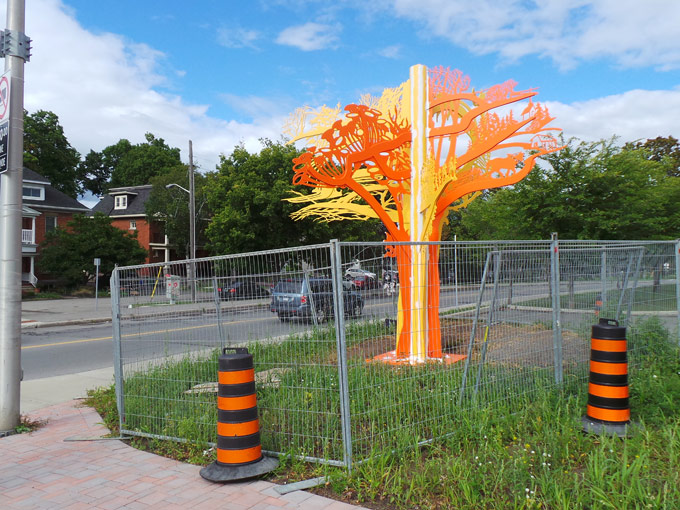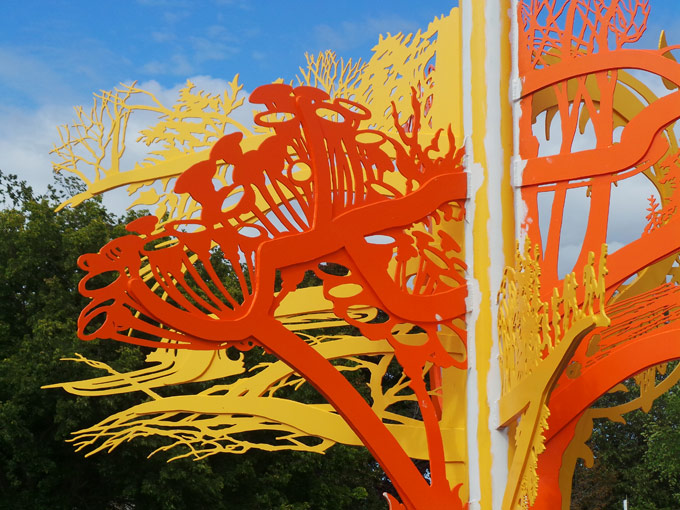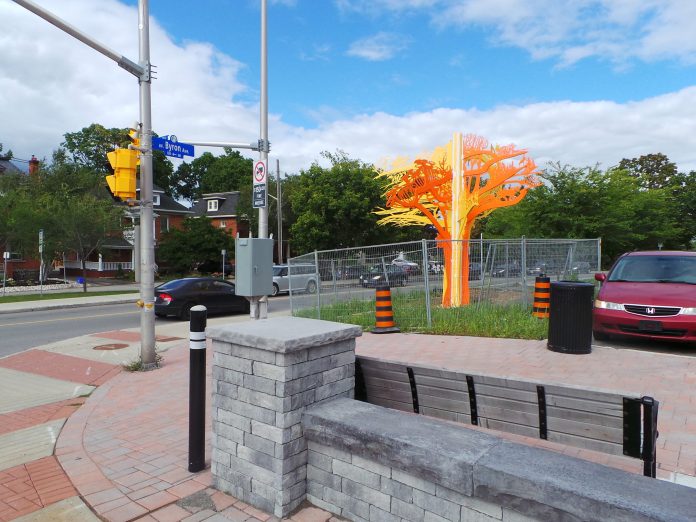By Craig Lord –
A new piece of art has sprouted up on the southeast corner of Churchill and Byron Avenues, and it’s bringing with it a fresh harvest of opinions from residents.
The sculpture, Tree of Life (working title) by artist Jennifer Stead, is a bold orange and yellow. It resembles, depending on your perspective, both a tree and vase of flowers, and stands about 5.5 metres tall. According to the City’s public art announcement, its branches depict images in tribute of the community’s history and its colours call to mind the sunset in all seasons.


But not all residents are warming up to the new piece. Councillor Jeff Leiper has received a few complaints about the sculpture and understands that residents might feel dissatisfied.
“There are always going to be subjective perspectives of the art itself,” Leiper says. “If people really don’t like looking at it, if they really don’t like it, I can understand why that might upset them.”
Stead’s piece was chosen after a two-stage public art competition, which welcomed resident feedback and left the final decision in the hands of representatives from Ottawa’s art community. The competition took into consideration artistic excellence, artist experience, site integration and sustainability.
Leiper says some residents have complained about the use of city funds to erect the sculpture. The piece was commissioned as part of the Public Art Program for rehabilitation projects which sets aside one per cent of total funds towards a public art project. The Churchill Rehabilitation project includes new sewers and water mains, a raised cycling lane, and traffic calming measures, to name a few. From the $21.4 million budget for the total project, $100,000 was set aside for public art.
“Spending tax dollars on art is considered by some to be frivolous,” notes Leiper.
Ever since he began campaigning, though, the Kitchissippi councillor has been an advocate of public art.
“It’s critical for us as a city to look up from the nuts and bolts sometimes and make efforts to try to contribute to our cultural life and have art in our lives,” he says.
“I think the system is one that is designed to ensure that sometimes challenging pieces, that are important to have in public places, get put in despite the subjective decisions that are made by all of us as to the piece’s artistic merits, or how it looks.”
Councillor Leiper says his role is not to dictate ‘what is art,’ or what quality art looks like.
“I think you’d end up with bland, inoffensive pieces that wouldn’t really contribute to our cultural life.”
Councillor Leiper’s office is always open to feedback from residents about the Public Art Program. In the meantime, Leiper advises residents to keep an open mind.
In our web poll: 55% of respondents said they “love it” and 35% said they “leave it.” 11% voted for “other,” and included the following statements:
- looks good now but what about in a couple of years?
- We need more art, not less
- Real tree would be better
- Meh
- Pretty bland and inoffensive. So it fails as art
- looks like all of the public art metal trees in London Ontario-are they related?
